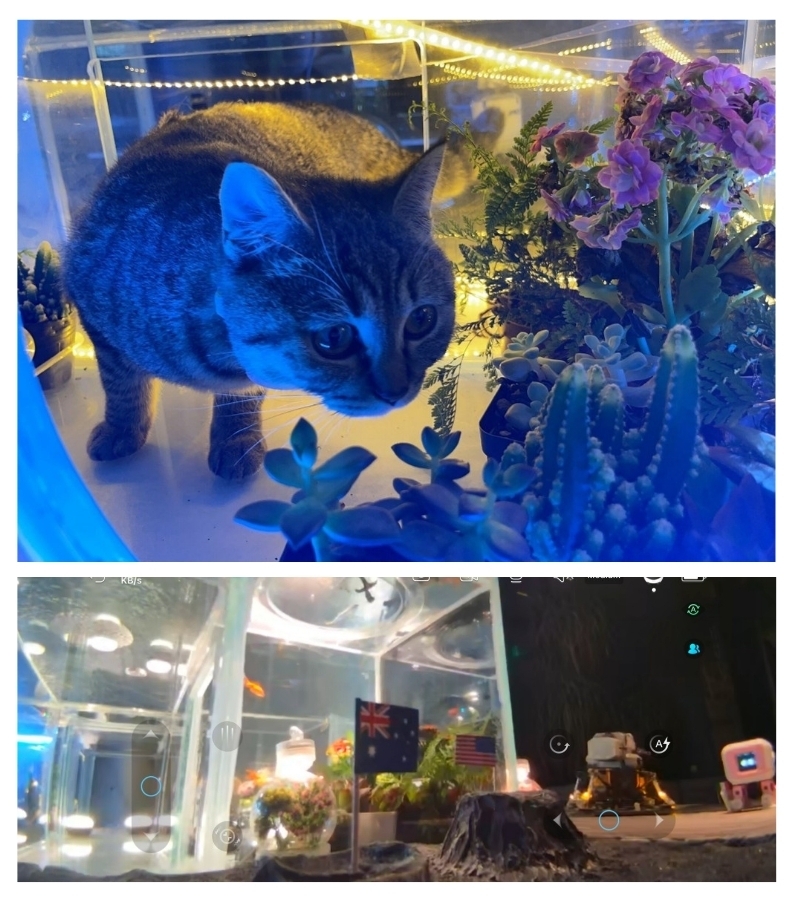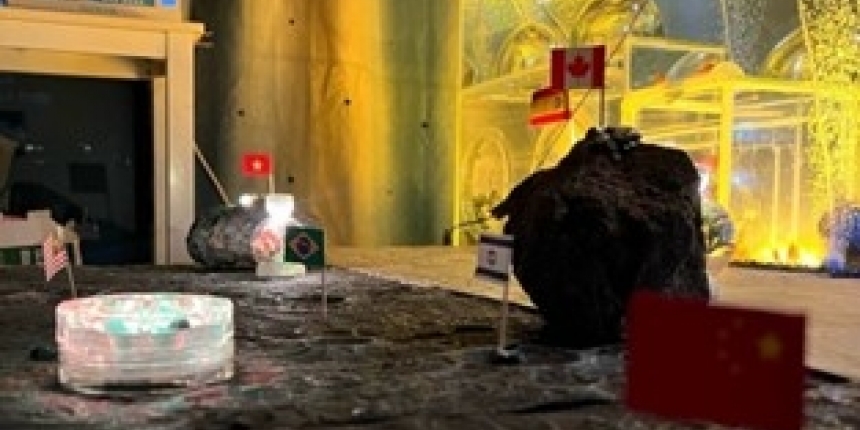Two of our Year 12 Science students recently took part in an online UMIC Lunar House Moon Mission Camp event in Guangxi, China. Chris Yi Yuan, founder of the PECA Interstellar Laboratory invited our students to remotely access their underwater facility where his team is researching the development of intelligent biospheric systems to grow life autonomously on Earth and in Space. UMIC lunar farm is a workstation surrounded by 800 Litres of water, containing aerated plant chambers, work and living quarters, and robotic patrol corridors.
Our team from Thomas Hassall, Emmeline M and Sidhanth K and myself joined the Chinese team in Chengdu and Nanning, China: Year 8 student, Amy served as the remote space command mission coordinator and translator. Chris, Xiao Jie, his cat Xiao Hu, on-site at the Lunar Farm, simulated the crew of a lunar surface workstation. The training process was intense and exciting, lasting 80 minutes. We faced challenges such as signal delays, language barriers, software and program errors, while simultaneously managing four robots, a cat, two computers, and two underwater cameras. On their mission, they were tasked to navigate through the lunar surface by using a micro bot, which simulated the skills involved controlling a lunar rover on the Moon. Inside the underwater facility, students were exposed to how plants and small ecosystems are able to sustain themselves under microgravity conditions. While there are increasingly more lunar and Mars simulation bases around the world, they are often located in deserts, far from cities. Over the past year, we designed this indoor mini underwater lunar farm, allowing ordinary people living in cities to participate in collaborative missions between Earth and outer space human habitat crews through on-site experiments and remote access. In fact, Chris and his team presented their research at the most recent International Astronautical Congress (IAC), held here in Sydney during September and October 2025.
Despite all the technological challenges, this mission may be the first of many and the relationship between the students at Thomas Hassall Anglican College can look forward to similar, and even more exciting experiences in space travel, microgravity research and sustaining life outside of our atmosphere.
You can see more videos in Chris Yi Yuan LinkedIn posts here.
The picture below is a screenshot of what in looked like controlling the lunar bot on a mobile device, with the Australian flag proudly displayed on the mission.

For some background on their research, you can read his vlog on this link.
To learn more about the celestial research done by Chris and his team, you can access a few video of the PECA Interstellar labs here.
Mr Calla Raats
Science Assistant Coordinator


